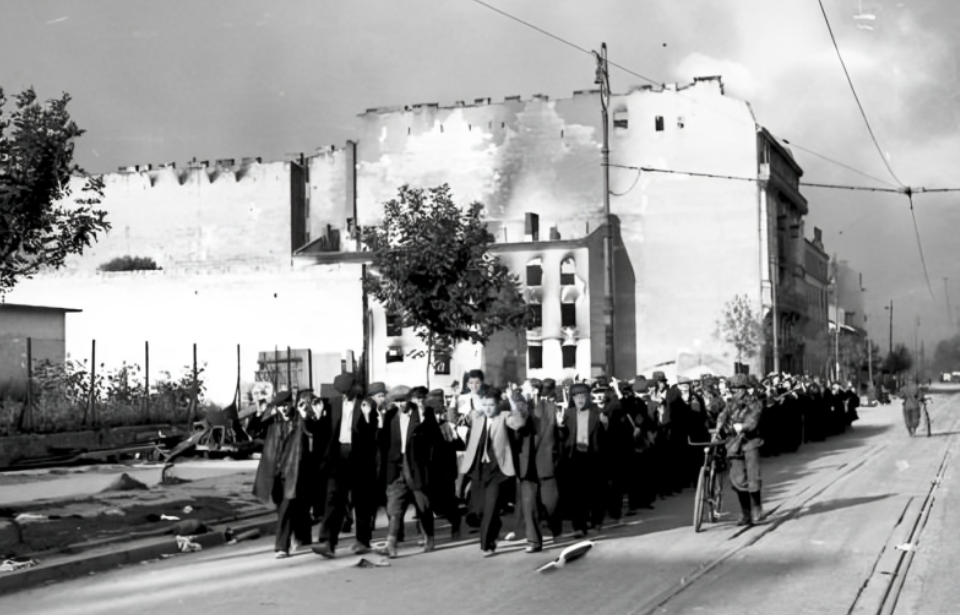One of the worst episodes of the Warsaw Uprising was the Wola Massacre. In an act of retaliation, German troops systematically slaughtered tens of thousands of Polish civilians in the Warsaw’s Wola district, aiming to crush the Polish Resistance and demoralize the city’s population. Eighty years on, this horrific event stands as one of the most tragic and devastating moments of the Second World War.
German occupation of Poland
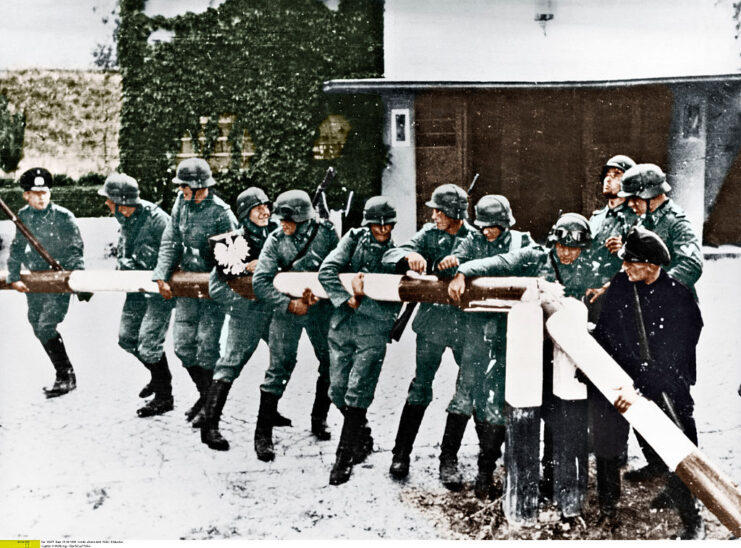
The German invasion of Poland in September 1939 marked the beginning of the Second World War. Under the false pretence that they were invading because the country was “persecuting ethnic Germans living in Poland,” the invasion force – consisting of 1.5 million troops, 2,000 military tanks and 400 fighter aircraft – swiftly overwhelmed the country, leading to its surrender before the month had ended. It was subsequently divided between Germany and the Soviet Union.
Under the German occupation, Poland experienced brutal repression, with the regime implementing policies aimed at eradicating Polish culture and subjugating its people. The Warsaw Ghetto, established in October 1940, became a symbol of the horrors faced by Polish Jews. It held around 460,000 civilians in appalling conditions, leading to widespread disease and starvation.
The Warsaw Ghetto Uprising in spring 1943 was a desperate act of resistance against Germany’s actions. Launched by 700 Jewish fighters, it was ultimately crushed. That being said, it inspired the Polish Home Army (the Resistance) and the civilian population to prepare their own uprising.
By 1944, with the Red Army approaching, the Polish Resistance launched the Warsaw Uprising, in an attempt to liberate the city from German control. They were further spurred on by the promise of aid from the Soviets.
Warsaw Uprising
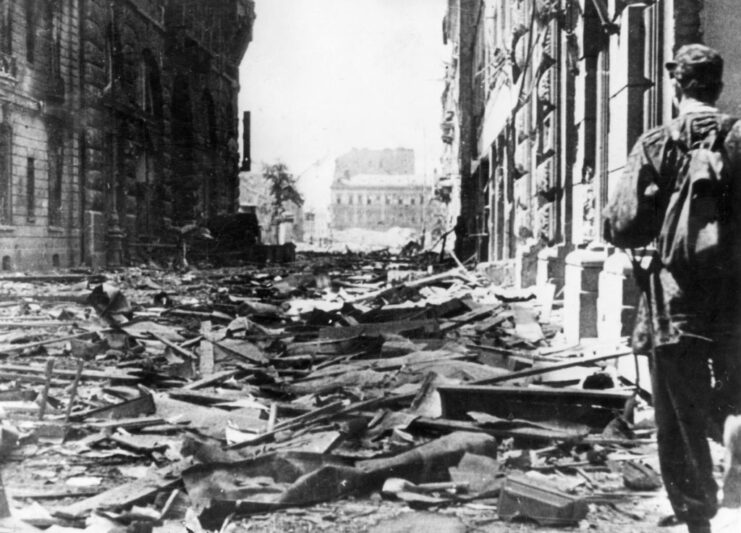
The Warsaw Uprising began on August 1, 1944, with an attack by 50,000 Resistance fighters against a small German garrison. As things progressed, the Polish Home Army launched coordinated attacks on enemy positions across Warsaw.
Initially, the Resistance achieved significant success, gaining the control of much of the city and capturing weapons and supplies. However, they failed to take Warsaw’s primary transportation and communication lines, giving the Germans the opportunity to regroup and launch brutal counterattacks.
Despite their determination, the Resistance was outgunned and outnumbered. After 63 days of intense fighting, the uprising was suppressed, resulting in the destruction of much of Warsaw. The death toll was also immense. Between 150,000 and 200,000 of those who perished were civilians, while another 15,200 Resistance members also lost their lives.
The consequences of the Warsaw Uprising were devastating. The surviving population was subjected to mass deportations and executions, with upwards of 700,000 expelled from the city. The uprising also had major political ramifications, as it allowed the Soviet Union to establish control over Poland without facing any real resistance.
Wola Massacre
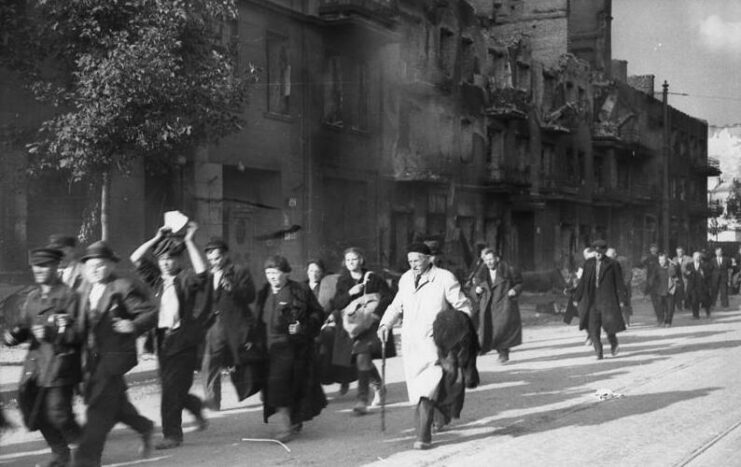
The Wola Massacre occurred from August 5-12, 1944, and it was one of the most horrific episodes of the Warsaw Uprising, if not the entire Second World War. Ordered by the Reichsführer-SS, it aimed to crush the spirit of the Polish Resistance by targeting civilians in the Wola district, in the western portion of the city.
The German forces, including the infamous Dirlewanger and Kaminski Brigades, carried out systematic mass executions, killing between 40,000 and 50,000 people, including women, children and the elderly. The massacre began with troops advancing into Wola, encountering heavy resistance from Polish fighters.
Unable to proceed, the Germans resorted to terror tactics, going house to house and executing civilians – they even used them as human shields. Hospitals weren’t spared, either; patients, doctors and nurses were murdered in their beds on “Black Saturday.”
The perpetrators, led by SS officers, committed unspeakable atrocities. The Dirlewanger Brigade, made up of convicts and sadistic volunteers, was particularly notorious for its brutality. Victims were often forced into basements and shot en masse, their bodies left to rot or burned to hide the evidence. The massacre continued for days, with the Germans using machine guns, grenades and flamethrowers to kill indiscriminately.
Why did the Wola Massacre happen?
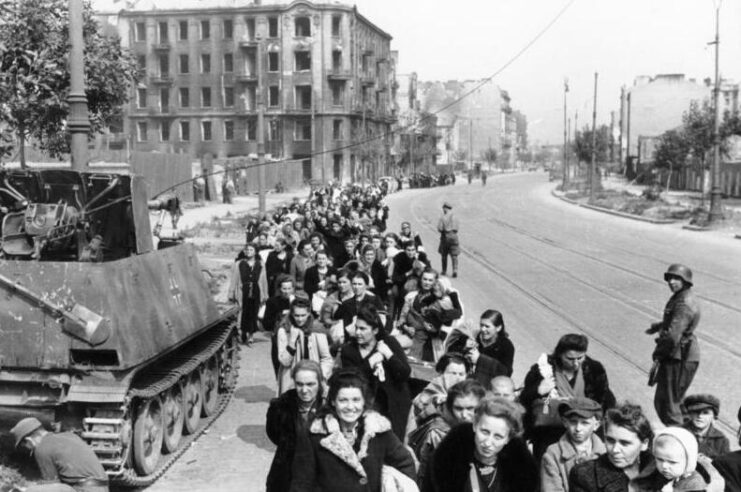
The Wola Massacre was driven by the German High Command’s desire to crush the Warsaw Uprising swiftly and decisively. The Reichsführer-SS‘ orders were clear: kill “anything that moves,” to demoralize the Polish Resistance and civilians. It was intended as a form of collective punishment, aimed at deterring further resistance by instilling fear and hopelessness.
The Germans also sought to eliminate any potential support for underground movements. By targeting civilians, they’d hoped to cut off the Resistance’s supply lines and weaken their resolve. The brutality of the massacre was meant to send a clear message that any act of defiance would be met with overwhelming and indiscriminate violence. However, instead of breaking the spirit of the Polish fighters, the massacre only fueled their determination to continue their mission.
Aftermath of the Wola Massacre
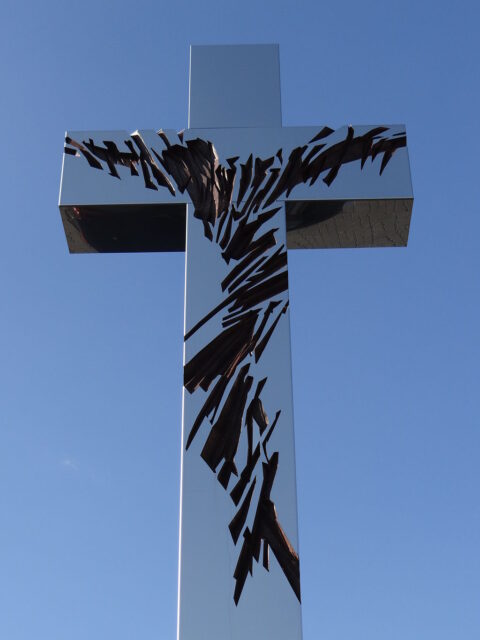
The aftermath of the Wola Massacre merged with that of the Warsaw Uprising. As aforementioned, the city’s infrastructure was left in ruins, and the few remaining inhabitants were forced into labor camps or executed.
Despite the scale of the massacre, none of the German perpetrators were held accountable for their crimes. Oskar Dirlewanger, responsible for some of the worst crimes of the episode, was captured by the French forces in 1945 and died under mysterious circumstances. Heinz Reinefarth evaded justice and had a successful post-war career in West Germany. He was able to obtain a government job and retired with a general’s pension.
More from us: Audrey Hepburn Risked Her Life to Help the Dutch Resistance During World War II
Want War History Online‘s content sent directly to your inbox? Sign up for our newsletter here!
In modern times, the Wola Massacre is remembered as a symbol of the resilience and suffering of the Polish people during World War II. Monuments and memorials have been erected in Warsaw to honor the victims, and annual ceremonies are held to remember the atrocities. The massacre is also a subject of historical research and education, ensuring what happened will forever be in the public consciousness.
